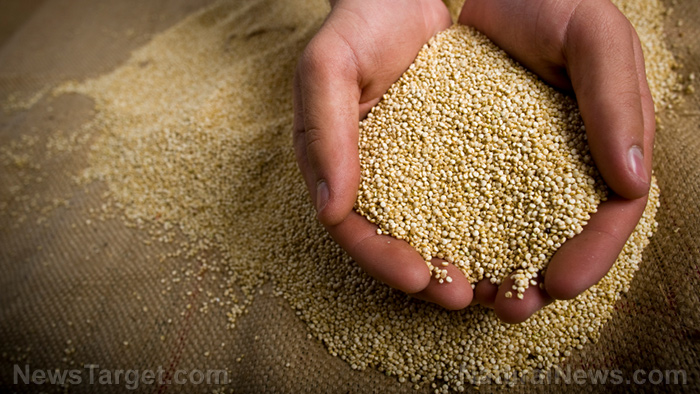
Rationing strategies you NEED to know when SHTF
Friday, October 26, 2018 by Rhonda Johansson
http://www.starvation.news/2018-10-26-rationing-strategies-when-shtf.html

Whatever liberals like to say about our country, the FACT is that we’ve never had it better. Under the current administration, more of us are employed and earning a really decent living. The idea, then, of rationing is a strange – if not surreal – topic, even among us preppers.
Sure, you can argue that you’re a survivalist and have prepared for the worst. You may be right, in the general sense. However, most preppers stockpile on nonperishable items like guns, ammo, and the like. Little emphasis is placed on what you can eat or how much you should when the brown stuff hits the fan.
Do you know how to properly distribute food when you have a limited supply? Who should be prioritized? Does everyone get an equal share?
Let’s begin by stating that an average man in his 30s should eat around 2,200 calories, while sedentary women need only around 1,600 calories to maintain a healthy weight. That said, the average American has been found to consume around 3,770 calories per day.
In an emergency, one’s nutritional intake may very well be cut in half, or more, depending on the severity of the emergency. This means that you need to learn how to survive on a diet that consists of around 1,200-1,500 calories.
Create an inventory
When SHTF, you need to know what food you have. Gather all of your supplies and create an inventory of them. Group foods into categories in order to determine which ones you’d have to eat first. Consider separating items into these categories:
- Fruits and vegetables
- Dairy products
- Meats
- Canned, cured, and dried goods
- Grains and pasta
- Baking and/or cooking supplies
- Miscellaneous
Highly perishable foods like fruits and vegetables need to be consumed first, followed by dairy products, meats, and so on.
How to distribute
How many people are you rationing for? This helps give you a general idea on how long your food supply will last. The smaller the portion, the lesser the calories, and the longer your supply will last. As a rule of thumb, men need more calories than women, and the elderly need less calories than younger people.
It helps to have a comprehensive food chart so that you can estimate how much food you can give to each person. The Food Nutrition Chart posted on What’s Cooking America is a good example. Here are some basic guidelines:
- A cup of white rice is 686 calories;
- An egg has around 100 calories;
- 100 g of ground beef has 164 calories;
- 100 g of chicken has 200 calories;
- A cup of oats has 147 calories, etc.
You can choose to follow these bare minimum calorie intake guidelines, as recommended in Off the Grid News:
- Adult male: 1,700
- Adult female: 1,328
- Elderly male: 1,475
- Elderly female: 1,100
- Teenage male: 1,655
- Teenage female: 1,486
- Youth male: 1,230
- Youth female: 1,165
- Baby/Toddler: 500-1,000
We must emphasize that these amounts are the minimum, and suggest a person who is hiding or is generally inactive. If someone in your group is out hunting or chopping wood, or what have you, they’d definitely need more calories than the bare minimum. (Related: Tips for eating on rations from the Great Depression: Recipes the Greatest Generation grew up on.)
How long are you rationing?
After determining how much food you have and how many people you need to feed, you have to figure out how long you need to make the food last. This can be done by considering what one meal would look like. Will it be for two adults? One kid? Several elderly people? You can then count the calories you would need and how much of each food group can be consumed. The total of that will tell you how much food you would lose from one meal.
Divide the food total by that meal total. This will tell you how many meals you have.
Start now
We can never really prepare for everything, but we can definitely try. As preppers, we encourage everyone to take simple steps to raise, grow, and store their own food. This way, even when the doodoo flies, you’ll have a sustainable way to feed yourself and your family.
See FoodStorage.news for more articles on storable food.
Sources include:
Tagged Under: Tags: disaster, food collapse, food rationing, food supply, Gear, off grid, preparedness, prepper, prepping, SHTF, starvation, survival, survival food





